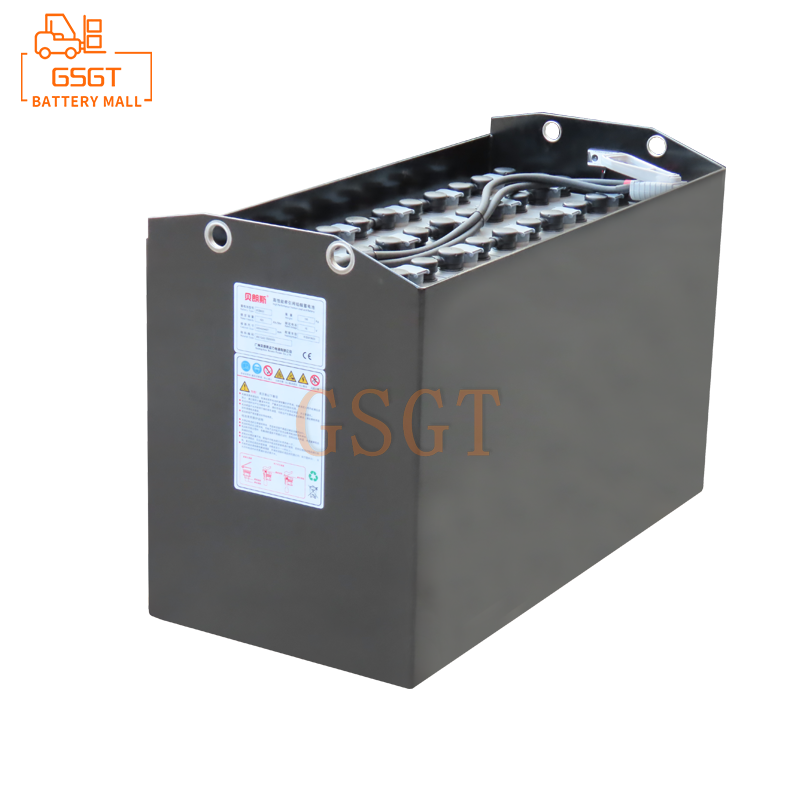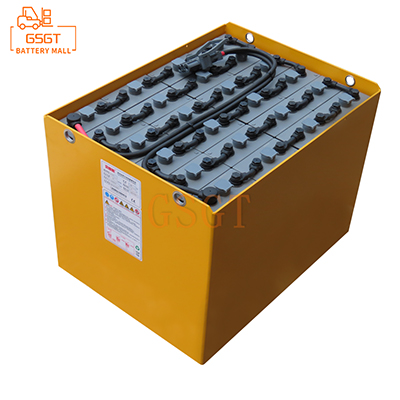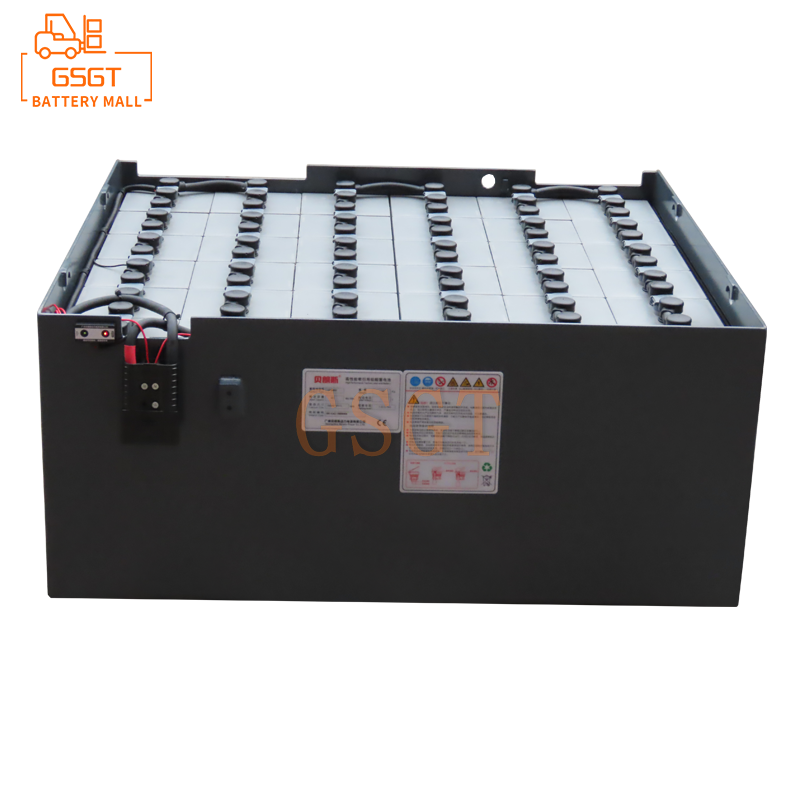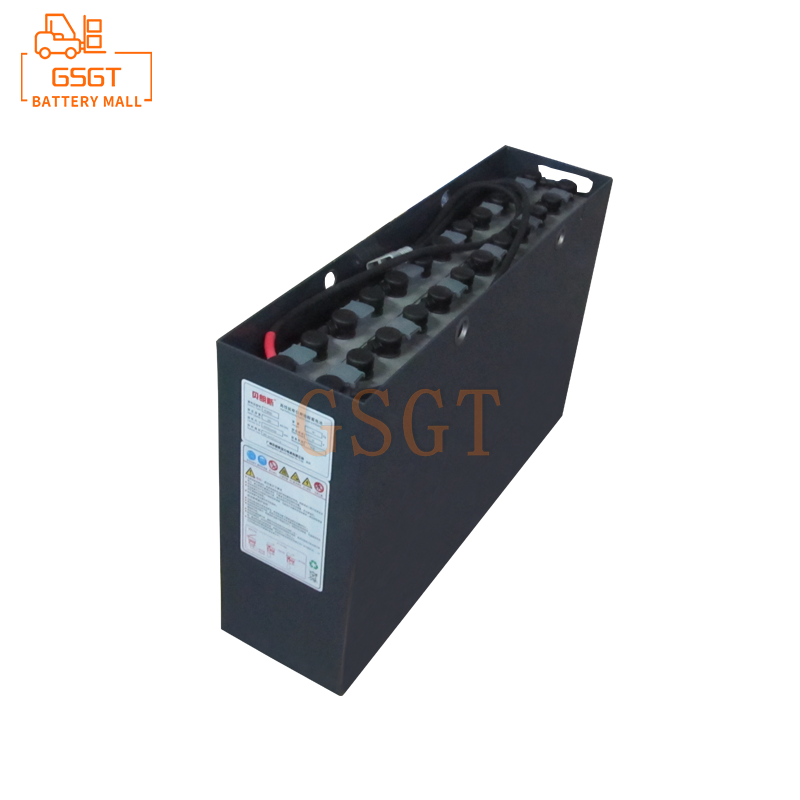Time:2025-04-29 10:05:30
Browse:853
Abstract
Lead-acid batteries, as a key power source for forklifts, their performance and reliability directly affect the normal operation and working efficiency of forklifts. This article elaborates in detail on the common fault types of lead-acid batteries used in forklifts during operation, deeply analyzes the causes of the faults, and specifically proposes practical and feasible solutions, aiming to provide comprehensive and practical references for forklift users and maintenance personnel to ensure the good performance of lead-acid batteries and extend their service life.
1. Introduction
In the modern logistics and warehousing industry, forklifts play a crucial role, and lead-acid batteries, as the "heart" of forklifts, provide power for operations such as forklift movement, lifting and handling of goods. However, due to frequent use, improper operation, insufficient maintenance and other factors, lead-acid batteries are bound to encounter various faults during use. Timely and accurate judgment and resolution of these faults are of great significance for ensuring the normal operation of forklifts, reducing operating costs and improving work efficiency.
2. Common Faults and Cause Analysis of Lead-Acid Batteries for Forklifts
(1) The capacity of the battery decreases
1. ** Plate sulfation ** : Due to long-term undercharging, low electrolyte level, and failure to charge in time after discharge, a layer of white and hard lead sulfate crystals will form on the surface of the plates, which hinders the normal chemical reaction between the electrolyte and the plates, thereby reducing the capacity of the battery. For instance, in some warehouses, forklifts are not charged in time after use and are used again the next day. If this continues for a long time, the sulfation of the plates will become more and more serious.
2. ** Active Material shedding ** : During the operation of forklifts, vibrations are generated. Frequent vibrations cause the active materials on the plates to gradually shed, reducing the effective substances involved in the electrochemical reaction and resulting in a decrease in capacity. In addition, excessive discharge and high current charging and discharging will also accelerate the shedding of active substances.
3. ** Electrolyte deterioration ** : Impurities such as metal ions mixed into the electrolyte can trigger side reactions, consume the sulfuric acid components in the electrolyte, reduce the density and conductivity of the electrolyte, and thereby affect the capacity of the battery. At the same time, after long-term use of the electrolyte, water evaporates and the concentration changes, which will also have an adverse effect on the capacity.
(2) Abnormal charging
1. ** Excessively high or low charging voltage ** : Faults in the charging equipment, such as damage to the voltage regulator of the charger, can cause unstable charging voltage. Excessively high charging voltage will cause the battery to heat up, accelerate the aging of the plates and the evaporation of the electrolyte. If the charging voltage is too low, the battery cannot be fully charged, which will affect its performance.
2. Excessive or insufficient charging current: Abnormal charging current may occur due to damage to the internal circuit components of the charger, poor contact in the charging line, and other reasons. Excessive charging current can cause the battery to heat up and the plates to deform. A charging current that is too small will prolong the charging time and may even prevent the charging process from being completed.
3. ** No charging ** : Situations such as open circuits in the charging line, damaged charging interfaces, or internal open circuits in the battery will prevent the battery from accepting charging. For instance, if the charging cable is crushed and damaged by a forklift, causing the circuit to be disconnected, the battery cannot be charged.
(3) Severe self-discharge
1. ** Impure electrolyte ** : The electrolyte contains impurities, which undergo chemical reactions with the plates to form tiny primary cells, causing the battery to self-discharge. For instance, if an electrolyte that does not meet the standards is used, the metal impurities in it will accelerate the self-discharge process.
2. ** Short circuit between Battery Casing or plates ** : If the battery casing is damaged, the plates are deformed, or the separator is damaged, it will cause the positive and negative plates to come into direct contact or form a short circuit through other conductive substances, resulting in self-discharge. When a forklift is in use and is subjected to a collision, it may cause the battery casing to break, leading to a short circuit problem.
3. Poor storage environment: If the battery is stored for a long time in a high-temperature and humid environment, it will accelerate the chemical reactions of the electrolyte and the evaporation of water, increasing the speed of self-discharge. For instance, if the battery is placed in direct sunlight, the excessively high temperature will intensify its self-discharge.
(4) Electrolyte leakage
1. ** Shell rupture ** : During the process of forklifts handling goods or driving, they may be subject to collision or compression, which can cause the battery shell to rupture and result in electrolyte leakage. In addition, aging of the battery casing and material quality issues may also lead to cracking.
2. ** Poor sealing ** : The sealant between the battery cover and the casing ages or seals poorly, or the liquid filling hole cover is not tightened. When the forklift vibrates or tilts, the electrolyte will leak out from the gap.
(5) Plate deformation
1. Excessive charging current: An excessive charging current will cause the plates to generate a large amount of heat, leading to their expansion and deformation. During the charging process, if the charging is not carried out in accordance with the prescribed current, this situation is likely to occur.
2. ** Excessive discharge ** : Excessive discharge of the battery will cause excessive consumption of the active substances on the plates, making the structure unstable and prone to deformation during subsequent charging. Long-term and frequent deep discharge will accelerate the deformation of the plates.
3. ** Improper installation ** : If the battery is not securely fixed during installation, the vibrations during the operation of the forklift will subject the plates to additional stress, leading to deformation.
3. Solutions to Common Faults of Lead-Acid Batteries Used in Forklifts
(1) Solutions to the decline in battery capacity
1. ** Dealing with Plate vulcanization ** : For plates with mild vulcanization, the method of long-term charging with a small current can be adopted for repair, which is known as "de-vulcanization charging". The specific operation is to adjust the charging current to 1/3-1/2 of the normal charging current and charge for 10-15 hours. For severely vulcanized plates, it is generally necessary to replace them with new ones. At the same time, it is necessary to develop good charging habits, avoid undercharging and over-discharging, and charge in time after each use.
2. ** Reduce the shedding of active substances ** : During the operation of the forklift, try to avoid severe vibration and jolting. Select an appropriate charging current and discharging depth to avoid high-current charging and discharging as well as over-discharging. Regularly check the condition of the plates. If a large amount of active material is found to have fallen off, clean the interior of the battery in time and replace the plates if necessary.
3. ** Replacement of electrolyte ** : Regularly check the quality and density of the electrolyte. If the electrolyte deteriorates or its concentration does not meet the requirements, replace it in a timely manner. When replacing the electrolyte, select electrolyte of qualified quality that meets the specifications of the battery and add it in the correct way. First, drain the old electrolyte from the battery completely. Then, rinse the interior of the battery with distilled water and add new electrolyte.
(2) Solutions for Abnormal Charging
1. ** Repair charging equipment ** : Check the voltage regulator, current regulator and other components of the charger. Replace them in time if any damage is found. Use professional testing equipment to test and calibrate the charger to ensure that the charging voltage and current are stable within the normal range. If the charger cannot be repaired, a new one should be replaced.
2. ** Check the charging circuit ** : Carefully inspect the charging circuit for any open circuits, short circuits, poor contacts, etc. Repair the damaged lines, reconnect the loose interfaces and ensure the charging lines are unobstructed. Regularly check the contact condition of the charging interface to avoid abnormal charging caused by poor contact.
3. ** Troubleshooting Internal Battery faults ** : If it is determined that the battery does not charge due to internal faults such as an open circuit, the battery casing needs to be opened for inspection. For repairable open circuit faults, such as loose connection points, they can be re-welded for repair. For internal faults that cannot be repaired, such as severe damage to the plates, a new battery needs to be replaced.
(3) Solutions for Severe self-discharge
1. ** Replace pure electrolyte ** : If self-discharge is caused by impure electrolyte, the electrolyte should be replaced immediately. When purchasing electrolyte, choose products made by regular manufacturers and pay attention to checking the quality inspection reports of the products. After replacing the electrolyte, the battery should be fully charged and discharged in cycles to restore its performance.
2. ** Repair Short Circuit Faults ** : For short circuit faults between the battery casing or plates, the first step is to determine the location of the short circuit. If the short circuit is caused by the damage of the shell, special repair materials can be used to repair the damaged area. If it is a short circuit between the plates, the battery case needs to be opened to check if the separator is damaged. If it is damaged, replace the separator with a new one and reinstall the plates.
3. ** Improve storage environment ** : Store the battery in a dry, well-ventilated and cool place, avoiding direct sunlight and high temperature and humidity. If the battery needs to be stored for a long time, regular supplementary charging should be carried out to prevent the battery from being discharged due to self-discharge.
(4) Solutions for electrolyte leakage
1. ** Repair or Replace the casing ** : If the battery casing is cracked, it should be dealt with according to the degree of cracking. For smaller cracks, repair materials such as epoxy resin can be used for repair. For severely cracked shells, new ones must be replaced. When replacing the casing, it is necessary to pay attention to choosing a casing of the same specification as the original battery and ensure it is installed firmly.
2. ** Enhance sealing ** : Check the sealant and the liquid filling hole cover between the battery cover and the casing. If aging or poor sealing is found, replace the sealant or tighten the liquid filling hole cover in time. When installing the sealant, apply it evenly to ensure the sealing effect.
(5) Solutions to Plate deformation
1. ** Standardized charging operation ** : Strictly follow the battery's user manual to select the appropriate charging current and charging time, and avoid charging with excessive current. During the charging process, closely monitor the temperature and voltage changes of the battery. If any abnormality is found, adjust the charging parameters in time.
2. ** Avoid Excessive discharge ** : Install a battery power monitoring device to monitor the battery power in real time. When the power drops below the specified value, stop using it immediately and start charging. Arrange the working tasks of forklifts reasonably to avoid excessive discharge of the battery due to overuse.
3. ** Correct installation of the battery ** : When installing the battery, make sure the installation position is correct and it is firmly fixed. Use appropriate fixing devices, such as bolts and clips, to secure the battery to the forklift to prevent the plates from deforming due to vibration during operation.
4. Conclusion
The common fault types of lead-acid batteries used in forklifts are diverse, and the causes of the faults are also rather complex. Through in-depth analysis and research on these common faults, we have proposed a series of targeted solutions. During actual use, forklift users and maintenance personnel should enhance the daily inspection and maintenance of lead-acid batteries, strictly follow the operating procedures, promptly identify and address potential fault hazards, to ensure the stable performance of lead-acid batteries, extend their service life, thereby guaranteeing the normal operation of forklifts and improving the efficiency of logistics and warehousing operations. Reduce the operating costs of enterprises. Meanwhile, with the continuous development of technology, new battery technologies are constantly emerging. We should also pay attention to industry trends and actively explore more efficient and environmentally friendly battery solutions.

$2450

$3405

$4045

$1060

MESSAGE
Professional And Efficient
Security
Affordable Price
Professional Services